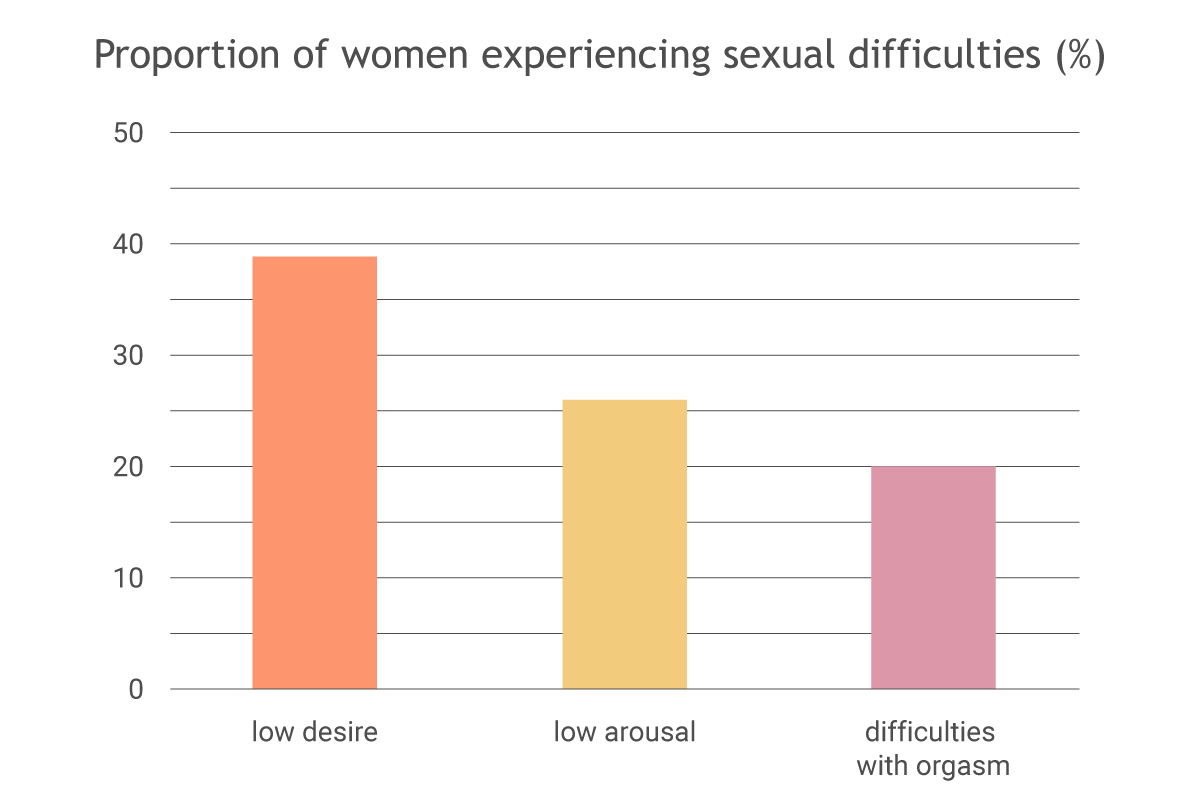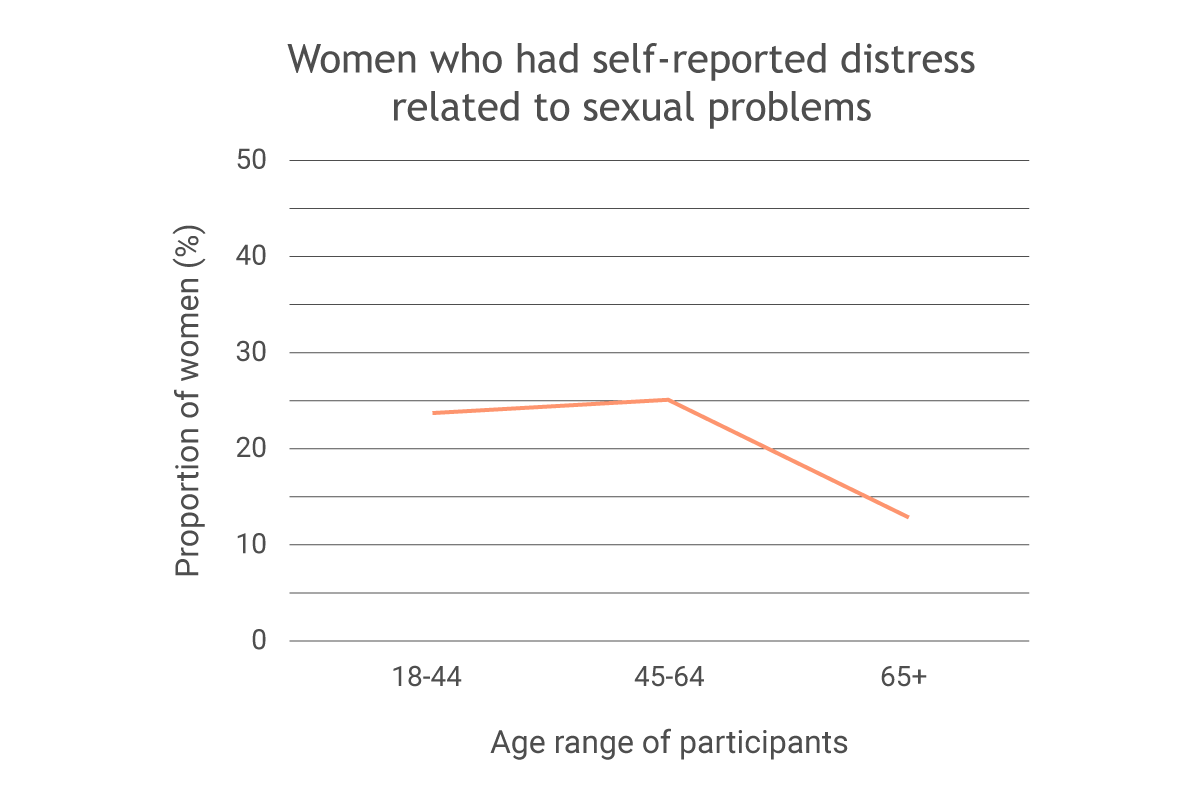Female low desire with distress is the most commonly reported sexual dysfunction in large US study
In one of the largest studies conducted to date on women’s sexual dysfunction, the PRESIDE study, aimed to get a better understanding of sexual problems reported by women, such as low sexual desire, low arousal, and/or orgasm difficulties. The study involved a survey of American women, seeking to identify those who experienced some or all of these problems and to get an understanding of how many women were distressed by them.
- Over 30 000 women responded to the questionnaire
- The age range of participants was 18-102
- The average age was 49
Sexual problems were assessed in all respondents using standardized questions, and sexually-related personal distress was measured using a scientifically validated assessment tool.

Self-reported sexual problems are common among women

Overall, rates of sexual problems increased with age
For the women in the study, the older the participant, the more likely they would report that they had experienced sexual problems.

Distress around sexual problems was most common in younger and middle-aged women

Sexual problems + personal distress
Overall, 12% of the women in the study reported having distress associated with at least one sexual problem. The same trend was seen as with the reporting of sexual problems – distress was highest related to low desire, followed by arousal, and then by orgasm difficulties.
Why do older women have less distress?
Possible reasons for low levels of distress despite a high prevalence of sexual problems in older women might include the significance of other medical problems, changes in partner status and sexual function, physical health problems of their partner, or the increased importance of other factors in long-lasting relationships. This would be an interesting question that could be investigated in future research.
Additional outcomes
An interesting trend seen outside the main outcomes of the study was that women experiencing depression had more than twice the likelihood of reporting distressing sexual problems than those who did not have depression. The link between depression and sexual dysfunction has been noted in other studies.
Conclusions
Reference article:
Shifren JL et al. (2008) Sexual problems and distress in United States women: prevalence and correlates. Obstet Gynecol. 112(5):970-8.